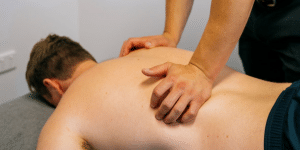What are the benefits of exercise if you have Type 2 Diabetes?

When it comes to taking control of Type 2 diabetes, there’s no argument that exercise plays a central role. Many health experts claim that exercise is the best medicine you can take for your health. The good news is that you don’t need to be running marathons to enjoy the benefits.
If you’re struggling to find the time and motivation to get moving, you might find some inspiration in the benefits of exercise. Exercise not only helps with Type 2 diabetes management, but it also improves mood, boosts willpower and accelerates weight loss. And it’s a great way to catch up with family and friends.
Here are the major benefits of exercise for diabetes management:
- Reduces blood glucose level (BGL)
- Lowers HbA1c (average level of blood glucose over the previous 3 months)
- Improves sensitivity to insulin (reduces insulin resistance)
- Reduces blood glucose for up to 48 hours after exercise
Working muscles use glucose as their fuel, which means that when we are exercising we are burning the glucose from our blood to provide our muscles with energy. Exercise also improves insulin sensitivity, so glucose is used more effectively. This reduces our BGL and tackles the root cause of Type 2 diabetes.
Additional benefits of exercise include:
- Increases muscle mass and reduces fat stores
- Enhances weight loss
- Reduces blood pressure
- Lowers cholesterol
- Reduces waist circumference
- Improves fitness
- Enhances blood flow to vital organs
- Improves digestion and keeps you regular
- Increases feelings of wellbeing
- Improves bone strength and balance
- Improves strength, flexibility, coordination, and posture
- Makes you feel more energetic and alert and improves concentration
- Decreases stress, anxiety, and depression
- Slows the deterioration associated with age
- Improves sleep
Always check with your doctor before starting any new form of exercise
How Much Exercise?
For most people, the easy answer to this question is… more!
The only way to improve physical and functional fitness is by increasing physical activity. The F.I.T.T. principle is a basic philosophy of what is necessary to gain health and fitness benefits from physical activity.
F.I.T.T. stands for:
- Frequency: how many times you participate in physical activity
- Intensity: how much an activity makes you huff and puff (or strain if lifting a weight)
- Type: the main physiological systems that are activated during activity
- Time: the amount of time that the physical activity lasts
Combining different types of exercise produces the best results. Aerobic exercise (such as walking, running or cycling) increases heart and lung fitness, while resistance training (short bursts of lifting, pushing or pulling) maintains and increases muscle and bone strength.

If you are unable to do this level of activity, you can still gain substantial health benefits by accumulating 30 minutes or more of moderate intensity physical activity a day, at least 5 times a week. If your breathing increases but you can still talk to a friend while exercising, this is a good indication that you are working at a beneficial level without significant risks.
Mild to moderate exercise generally causes a decrease in BGL. This glucose-lowering effect usually lasts for 48 hours after the last bout of exercise. This means that to maintain lower BGL, we must exercise at least every 2 days. How much your BGL is reduced by exercise is variable and relates to the duration and intensity of exercise.
Everybody reacts differently to exercise, so you have to know your BGL response to the exercise you are doing. Understanding more about exercise and diabetes (see a Dietitian or Exercise Physiologist) allows you to identify any adjustments that may be needed to your food intake or medication.
START TODAY!
There’s no time like the present to commit to finding time to exercise in order to improve your health and increase your energy levels. Use our exercise tips to help you make a start:
- Ease into it with 10 minutes in the morning, 10 at lunch and another 10 at the end of the day
- Find something you enjoy and have fun!
- Get into the groove by forming some good exercise habits
- Warm up with some gentle stretching before and after your exercise sessions
- Reward yourself — nothing motivates like success!
Often people can be active throughout their day without even trying. This is known as active living and it contributes to improving your health. Active living doesn’t have to be planned and can be easy and enjoyable. Making an effort to reduce your sitting time is a good start. Try these:
- Walk or ride to the shops, post office or to work
- Use the stairs rather than the lift
- Meet friends for a walk, cycle, dancing or exercise class
- Get off the bus 1, 2 … 3 stops earlier
- Do active jobs around the house, such as vacuuming or mowing the lawns
- Pace up and down while talking on the phone
- Take the dog for a walk
If you’d like practical, effective support to manage your diabetes then contact us here or book an online appointment
Check out Mick’s story for inspiration: Beating Diabetes – Mick’s Story






